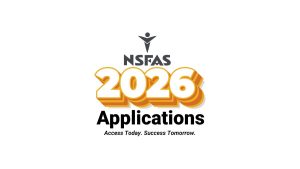If you’re struggling to meet your monthly financial obligations and find yourself overwhelmed by debt, applying for debt review in South Africa could be your path to financial relief. Introduced under the National Credit Act (NCA) 34 of 2005, the debt review process is designed to assist over-indebted consumers by restructuring their debt repayments into a manageable plan.
Here’s everything you need to know about how to apply, what to expect, and the benefits and considerations involved.
What is Debt Review?
Debt review, also known as debt counselling, is a legal process that allows over-indebted South Africans to restructure their debt repayments under the supervision of a registered debt counsellor. Once under debt review, consumers are protected from legal action by creditors and can begin paying a single, reduced monthly instalment.
Who Qualifies for Debt Review?
To apply for debt review, you must meet the following criteria:
Be a South African citizen aged between 18 and 65 years with a valid South African ID.
Be employed or have a regular income to make reduced monthly payments.
Be over-indebted, meaning you are unable to meet essential living expenses and debt obligations.
Be willing to commit to a long-term repayment plan (typically up to 60 months).
Step-by-Step: How to Apply for Debt Review
1. Initial Consultation
The first step is to contact a registered debt counsellor for a free and confidential assessment of your financial situation. This consultation helps determine whether you are over-indebted and eligible for debt review.
Where to find help: Visit the National Credit Regulator (NCR) website at www.ncr.org.za for a list of registered debt counsellors.
2. Submit Form 16 and Documentation
If you qualify, you’ll complete a Form 16 (Debt Review Application Form) and submit supporting documents, including:
A copy of your South African ID
Recent bank statements (typically for the last 3 months)
Latest pay slips or proof of income
Account statements for all your credit agreements
This form authorises the debt counsellor to act on your behalf.
3. Creditors Are Notified
Once your application is received, the debt counsellor has five business days to notify all your creditors and credit bureaus. This notification freezes any legal action against you and flags your accounts as “under debt review.”
4. Financial Assessment and Repayment Plan
Your counsellor will then conduct a comprehensive financial assessment, including your income, monthly expenses, and debt obligations. Based on this, they will propose a new repayment plan tailored to your affordability.
5. Negotiations with Creditors
Creditors have 10 business days to accept or propose counteroffers to the repayment plan. The debt counsellor negotiates reduced interest rates and extended repayment terms on your behalf.
6. Court Approval
If all creditors agree, the proposal is submitted to the magistrate’s court within 60 days of your application. Once approved, the plan becomes a court order, legally binding for all parties.
7. Single Monthly Payment
You will begin making a single, consolidated monthly payment via a Payment Distribution Agent (PDA) appointed by the National Credit Regulator. The PDA distributes the funds to your creditors according to the court order.
8. Receiving a Clearance Certificate
After all debts listed under the debt review are fully paid, your counsellor issues a Clearance Certificate (Form 19). This confirms your successful exit from debt review and instructs credit bureaus to remove the debt review status from your profile.
Key Benefits of the Review
Legal Protection: Creditors cannot take legal action once you’re under debt review.
Reduced Monthly Payments: Repayments are adjusted to match your income and affordability.
Asset Protection: Your home, car, or other assets are protected from repossession during the process.
Credit Record Recovery: Your credit profile is cleared of the debt review flag once repayment is completed.
Debt Review Fees and Costs
Although the initial consultation is free, there are regulated fees for the debt review process, as outlined by the NCR:
| Fee Type | Estimated Cost (Incl. VAT) |
|---|---|
| Application/Admin Fee | R350 + VAT |
| Restructuring Fee | Up to R8,000 + VAT (once-off) |
| Monthly Maintenance Fee | 5% of monthly instalment (capped at R450 + VAT) |
| PDA Fee | Included in your monthly instalment |
These fees are typically deducted from your first few payments and are built into your restructured repayment plan, meaning no upfront payment is required.
Important Considerations
Before proceeding with debt review, it’s important to be aware of certain conditions:
No New Credit: You cannot apply for any form of credit while under debt review.
Long-Term Commitment: While payments are lower, the repayment period may stretch up to 60 months.
No Early Exit Without Full Settlement: You can only exit the process once all restructured debts are settled or paid in full.
Alternatives to Debt Review
Debt review is a helpful tool for over-indebted individuals, but it’s not the only option. Consider these alternatives before applying:
Negotiating directly with creditors for lower interest rates or temporary payment holidays.
Debt consolidation loans (if your credit score allows it), which combine all debts into a single loan.
Voluntary sequestration for severe financial distress, though this has longer-term legal implications.
Check also: How to Check If You Are Blacklisted in South Africa
Debt review is not a quick fix, but it offers a structured, legally protected pathway out of financial distress for South Africans. By working with a registered debt counsellor, you can regain control of your finances, protect your assets, and work towards becoming debt-free.
If you’re unsure whether this is the right step for you, consult a registered debt counsellor or a financial advisor for guidance tailored to your circumstances. The sooner you act, the more options you may have available to get your finances back on track.










